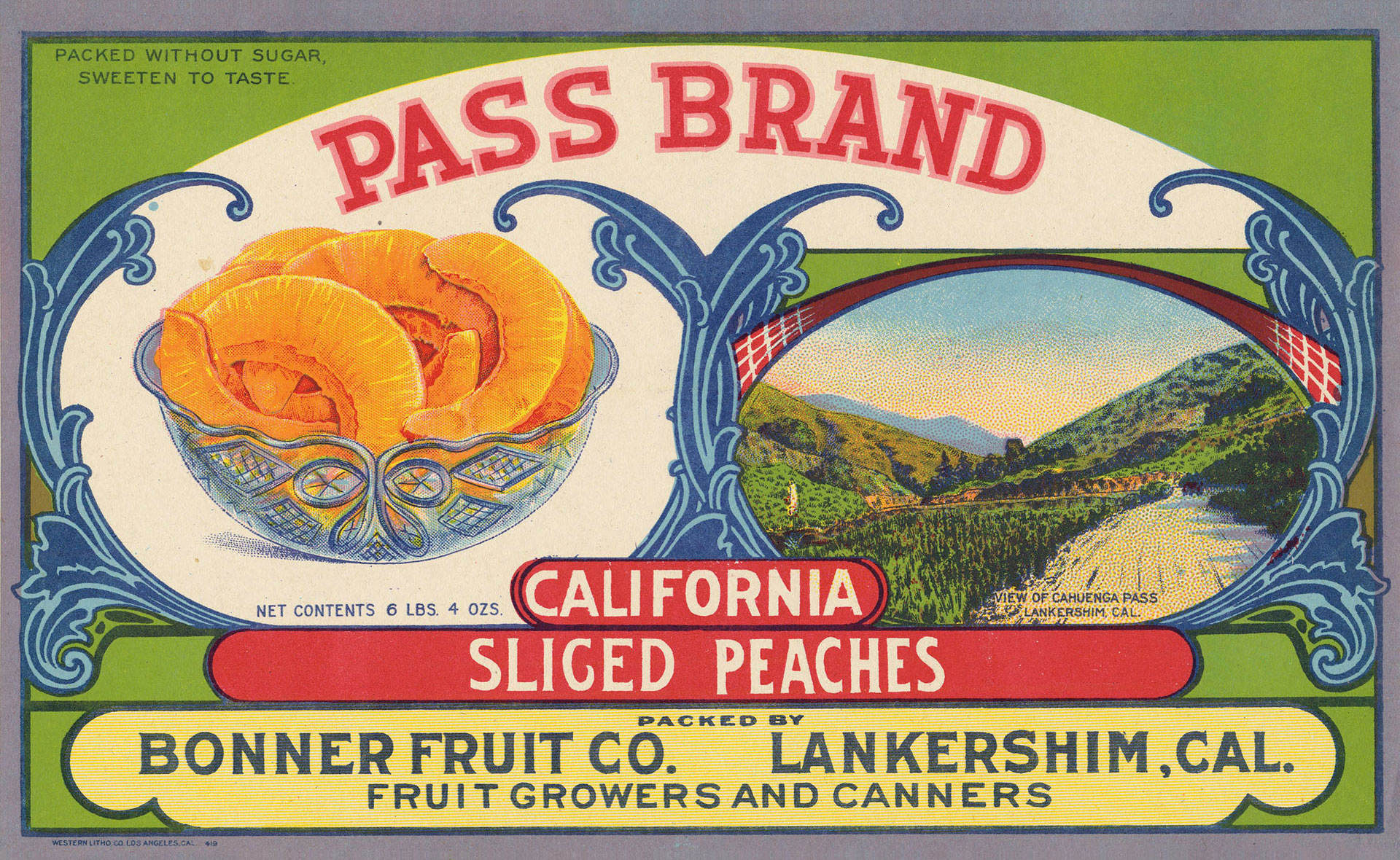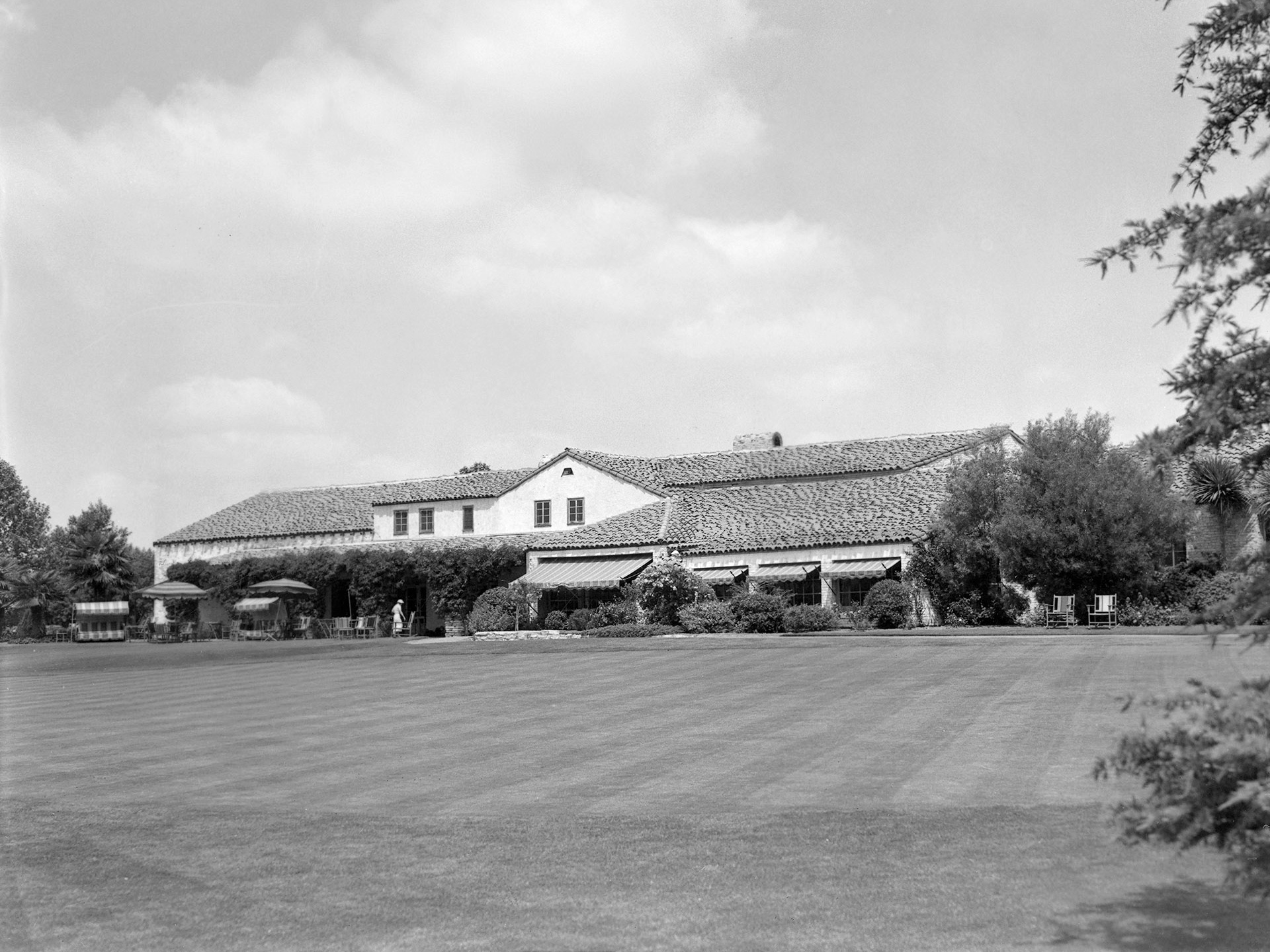

Whether serving as one of the most prosperous farming communities in the San Fernando Valley or one of the most prolific in creative output, for more than 100 years Toluca Lake has been considered the cream of the crop in beauty, location and attitude. Once the ranch of General Charles Forman, the area eventually evolved into a tony entertainment community sandwiched between two major motion picture studios and centered around a scenic lake.
In its early days, Toluca Lake and all surrounding areas served as hunting grounds for the nomadic Tongva Indians before becoming part of the massive Alta California Spanish mission system, providing grazing land and food crops to the San Fernando Mission. With the advent of the Mexican land grant system, however, Pio Pico eventually became owner of virtually the whole southern half of the San Fernando Valley.
Power rancher Isaac Lankershim and his San Fernando Farm Homestead Association purchased all interest in the ex-mission land from Pico on July 2, 1869, and acquired all of Eulogio de Celis’ property through a lawsuit, thereby owning the entire southern portion of the Valley. Succeeded in name by the Los Angeles Farm and Milling Company on February 7, 1880, the organization raised sheep and later wheat before its final acquisition by the Lankershim Ranch Land and Water Company in early 1888.


Joining with partners Isaac Van Nuys, F.C. Garbutt, L.T. Ramsey, S.W. Luitweiler, William Bogel, C.W. Smith and W.S. De Van, Lankershim’s son James established the new company to subdivide 12,000 acres into gentleman farms near a small town they called Toluca, which supposedly translated as “fertile” or “beautiful” in the Paiute language. On April 1, 1888, the organization offered ready-made “ranchettes” for sale, most ranging in size from 10 to 120 acres, already planted with nut and deciduous fruit trees — mostly peaches, apricots, pears and walnuts — which, they touted in hyperbolic advertisements, could survive the hot, rainless summers of the San Fernando Valley. For almost the next 50 years, the vast tract mostly operated as farms and ranches for European immigrants who ventured West seeking success and opportunity, a breadbasket for the rest of the United States.

While the majority of the ranches also served as homesteads for gentleman farmers, some remained profitable investments for their wealthy landlords. General Charles Forman, “pioneer, Indian fighter, capitalist, and a prominent figure in the early financial life of Los Angeles” per the 1919 Los Angeles Times, and a new member of the Board of Directors for the Lankershim Ranch Land and Water Company, purchased a tract he named the Forman Subdivision in 1889, turning a large majority of it into a flourishing ranch.

Coming to California as a young man in 1854, the driven Forman quickly rose from lowly post office worker to Nevada mine owner, lumber baron, street railway tycoon, Pacific Light and Power magnate, bank executive and Los Angeles Chamber of Commerce president before setting his sights on conquering farming. Ranch hands actually farmed the property while the tycoon lived in a stately mansion near downtown.
Forman’s land, which he called Laguna or Rancho Toluca, thrived in part thanks to a muddy, spring-fed lake and marsh for which his property was named. This small lake irrigated his crops, some of the most impressive in the area. Forman’s lush, succulent produce output included pumpkins, cucumbers, onions, melons, Satsuma plums, apples, pears, apricots, peaches and walnuts. Many won prizes at regional and statewide contests for their taste and appearance as well as their gigantic size, such as the 135-pound pumpkin grown on the ranch in 1895.

On January 3, 1924, five years after Forman’s death, real estate syndicate Heffron-McCray-St. John purchased 151 acres of the Forman ranch from the family for $300,000, intending to create an upscale housing community and investment opportunity in the shadow of the “scenic grandeur” of Cahuenga Peak. Naming the attractive subdivision Toluca Lake Park, an Anglicized version of the ranch and lake’s name, the developers promoted their community as a secluded, picturesque country suburb just minutes from Hollywood with lots costing $900 to $1,200. Ads for Toluca Lake Park noted that it was populated with “the alluring charms of nature,” such as stately 50-year-old oaks, sycamores, eucalyptus and walnut trees, and offered such recreational opportunities as “boating, hiking, fishing, riding, golf and many other features for the tired business man and his family.”

Beyond the Community Park where families came to picnic and relax, the enterprise began restoring the lake to its “natural” state in February, damming it, increasing its size to eight acres, adding a concrete bottom over the 27 natural springs below, stocking it with bass and constructing boat landings at home sites, allowing easy access to its calm waters. Promoters declared they would construct a park for residents on the west side of the lake near an inviting canopy of huge eucalyptus. Those who purchased lots adjoining the lake would also gain exclusive rights for the use of it up to 155 feet from the shore.

Toluca Lake, “glistening like a diamond in a vast setting of waving green” per the Los Angeles Times, quickly found its closeup, serving as a shooting location for several motion-picture studios. Neighboring Universal Studios filmed actress Virginia Valli tipping over in a canoe for the 1924 film K — The Unknown. That July, an unnamed studio staged miniature ocean liners and small model speedboats supposedly engaged in rum smuggling 12 miles out at sea on the peaceful pond. Comedy companies like Christie Film Company also employed the sparkling lake, and Tarzan the Ape Man and Hal Roach’s “Our Gang” kids would appear there as well.

Land sales took off, mainly to people looking for a ripe investment by holding on to property rather than constructing homes. While the lake attracted guests, the first five residents in Toluca Lake stayed away from its banks, according to the Times. Real estate tycoon L.A. McCray, one of the founding officers of Lakeside Golf Club, hired architect J.B. Severance and spent $20,000 to construct the first lakeside home in May 1925, the average cost of the area’s mostly Spanish Colonial Revival residences.

Throughout 1924 and 1925, several infrastructure developments facilitated Los Angeles’ real estate boom. New roads such as Mulholland Drive and Cahuenga Highway, the widening of other major thruways and the paving of streets enhanced safety and reduced driving times to and from the city and the San Fernando Valley. With these improvements, Valley residents could easily commute to Hollywood or Los Angeles for jobs or recreation.

The opening of the exclusive Lakeside Golf Club in September 1925 juiced sales in Toluca Lake Park. Then, after the newly constructed First National Studios (now Warner Bros.) opened off Dark Canyon Road (Barham Boulevard) in 1926, construction skyrocketed. Celebrities and entertainers descended on the charming, wooded tract as a refuge from daily concerns. They could enjoy rural solitude just minutes from virtually all film studios, eventually ringing the small lake with homes.

Actors such as Richard Arlen and Jobyna Ralston, Belle Bennett, Warner Oland, Lupino Lane and Charles Farrell constructed homes in the area, Arlen to enjoy golfing at Lakeside and Farrell to enjoy canoeing on the Lake. Eventually Warner Bros. stars such as Al Jolson, Dick Powell, Walter Huston, Mary Astor and George Brent would join their compatriots, along with two superstars who proudly promoted the community wherever they went — Bob Hope and Bing Crosby. Riffing on the name of the actor who played Dagwood Bumstead in 28 popular Blondie films in the 1930s and ’40s, a joke went around that “Arthur Lake is not a summer resort, and Toluca Lake is not his sister.”
Swans appeared on the lake; entertainment magazines claimed Farrell brought them as a reminder of his New England home, while the Hollywood Citizen newspaper declared that the Golf Club wanted a touch of class in front of the clubhouse. Whatever the actual truth, the swans soon became Toluca Lake’s graceful symbol.

The entertainment community enjoyed their close camaraderie, sharing bike rides, picnics, golfing and cocktail hours, which often led to the creation of gags. When ebullient comedian Jack Oakie began pricing homes in the area in early 1933, a secret group formed the “Keep Oakie Out of Toluca” fund, and signs mysteriously appeared along the roads leading into the community, proclaiming “Poison Oakie.” The comedian ended up buying in Beverly Hills but maintained his friendships with the Toluca crew.
Developers eventually opened up the west side of the lake to construction, leading to the destruction of the eucalyptus grove and its shaded park. Over the following decades, many celebrities continued to establish roots in Toluca Lake, loving it for many of the same reasons as the original entertainment industry residents. Still a secluded oasis in the San Fernando Valley, Toluca Lake offers a plethora of charms for its discriminating inhabitants.
